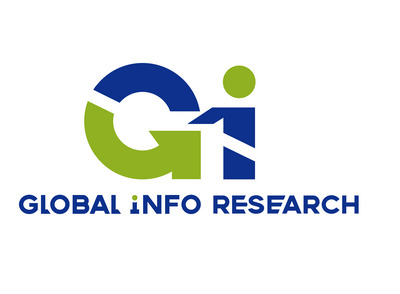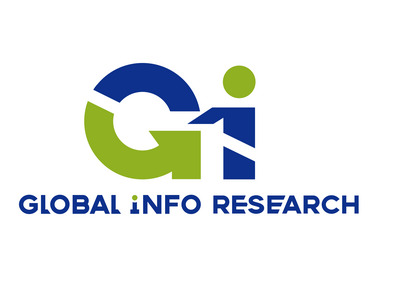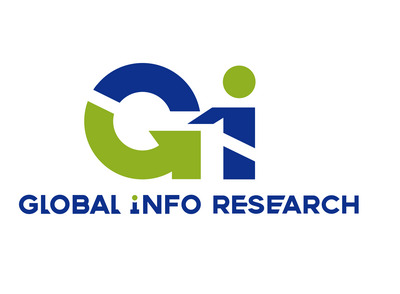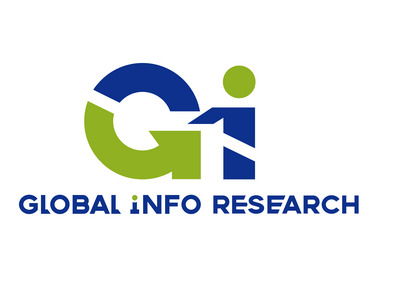
Gain-Flattened Distributed Raman Amplifier Market Research Report
Global Info Research‘s report is a detailed and comprehensive analysis for global Gain-Flattened Distributed Raman Amplifier market. Both quantitative and qualitative analyses are presented by manufacturers, by region & country, by Type and by Application. As the Gain-Flattened Distributed Raman Amplifier market is constantly changing, this report explores the competition, supply and demand trends, as well as key factors that contribute to its changing demands across many markets. Company profiles and product examples of selected competitors, along with market share estimates of some of the selected leaders for the year 2025, are provided.
According to our (Global Info Research) latest study, the global Gain-Flattened Distributed Raman Amplifier market size was valued at US$ 104 million in 2024 and is forecast to a readjusted size of USD 167 million by 2031 with a CAGR of 7.0% during review period.
In this report, we will assess the current U.S. tariff framework alongside international policy adaptations, analyzing their effects on competitive market structures, regional economic dynamics, and supply chain resilience.
Global sales of gain-flattened distributed Raman amplifiers (DRAs) will reach approximately 7,800 units in 2024, with an average price of approximately ,950 per unit and an industry gross profit margin of approximately 38%–42%. Gain-flattened distributed Raman amplifiers utilize the optical fiber itself as the amplification medium, achieving distributed Raman gain through reverse or bidirectional injection of pump light. These amplifiers effectively compensate for signal attenuation, improve the signal-to-noise ratio (SNR), and extend relay distances over long-haul transmission. Unlike traditional erbium-doped fiber amplifiers (EDFAs), DWDM distributed Raman amplifiers distribute the amplification region throughout the entire fiber link, reducing the system noise figure by 2–5 dB. They are widely used in backbone DWDM systems, transoceanic optical cables, ultra-long-haul data center interconnects (DCIs), and quantum communication networks. A typical DRA is deployed every 500–700 kilometers along a typical optical cable trunk, cascaded with an EDFA to form a hybrid amplification architecture. Upstream raw materials primarily include high-power pump lasers, germanium-doped/erbium-doped fibers, wavelength division combiners (WDMs), optical isolators, and temperature-controlled heat sinks. These components account for approximately 55%–60% of the total system cost. A single C-band Raman amplifier provides over 15 dB of on/off gain flatness across the 1525nm to 1565nm wavelength range, with a gain flatness of < ±1.5 dB, supporting 50 DWDM channels. Coherent, with its extensive expertise in pump lasers and fiber components, leads the Raman amplifier product line, with an annual production capacity of approximately 2,500 units.
This report is a detailed and comprehensive analysis for global Gain-Flattened Distributed Raman Amplifier market. Both quantitative and qualitative analyses are presented by manufacturers, by region & country, by Type and by Application. As the market is constantly changing, this report explores the competition, supply and demand trends, as well as key factors that contribute to its changing demands across many markets. Company profiles and product examples of selected competitors, along with market share estimates of some of the selected leaders for the year 2025, are provided.
Market segment by Type: Pre-Raman、 Post Raman
Market segment by Application:Backbone DWDM Long-Haul Network、 Transoceanic Fiber Optic Cable、 Ultra-Long-Haul Data Center Interconnection、 Quantum Communication Network、 Others
Major players covered: Coherent、 Cisco、 Optilab、 Lumentum、 MPBC、 Amonics、 Nuphoton Technologies、 Avara、 Sintai Communication、 Wuxi Taclink Optoelectronics Technology、 HUAWEI、 Accelink、 PacketLight、 FS、 3C-LINK、 Hangzhou Huatai Optic Tech、 Ficer Technology
According to our (Global Info Research) latest study, the global Gain-Flattened Distributed Raman Amplifier market size was valued at US$ 104 million in 2024 and is forecast to a readjusted size of USD 167 million by 2031 with a CAGR of 7.0% during review period.
In this report, we will assess the current U.S. tariff framework alongside international policy adaptations, analyzing their effects on competitive market structures, regional economic dynamics, and supply chain resilience.
Global sales of gain-flattened distributed Raman amplifiers (DRAs) will reach approximately 7,800 units in 2024, with an average price of approximately ,950 per unit and an industry gross profit margin of approximately 38%–42%. Gain-flattened distributed Raman amplifiers utilize the optical fiber itself as the amplification medium, achieving distributed Raman gain through reverse or bidirectional injection of pump light. These amplifiers effectively compensate for signal attenuation, improve the signal-to-noise ratio (SNR), and extend relay distances over long-haul transmission. Unlike traditional erbium-doped fiber amplifiers (EDFAs), DWDM distributed Raman amplifiers distribute the amplification region throughout the entire fiber link, reducing the system noise figure by 2–5 dB. They are widely used in backbone DWDM systems, transoceanic optical cables, ultra-long-haul data center interconnects (DCIs), and quantum communication networks. A typical DRA is deployed every 500–700 kilometers along a typical optical cable trunk, cascaded with an EDFA to form a hybrid amplification architecture. Upstream raw materials primarily include high-power pump lasers, germanium-doped/erbium-doped fibers, wavelength division combiners (WDMs), optical isolators, and temperature-controlled heat sinks. These components account for approximately 55%–60% of the total system cost. A single C-band Raman amplifier provides over 15 dB of on/off gain flatness across the 1525nm to 1565nm wavelength range, with a gain flatness of < ±1.5 dB, supporting 50 DWDM channels. Coherent, with its extensive expertise in pump lasers and fiber components, leads the Raman amplifier product line, with an annual production capacity of approximately 2,500 units.
This report is a detailed and comprehensive analysis for global Gain-Flattened Distributed Raman Amplifier market. Both quantitative and qualitative analyses are presented by manufacturers, by region & country, by Type and by Application. As the market is constantly changing, this report explores the competition, supply and demand trends, as well as key factors that contribute to its changing demands across many markets. Company profiles and product examples of selected competitors, along with market share estimates of some of the selected leaders for the year 2025, are provided.
Market segment by Type: Pre-Raman、 Post Raman
Market segment by Application:Backbone DWDM Long-Haul Network、 Transoceanic Fiber Optic Cable、 Ultra-Long-Haul Data Center Interconnection、 Quantum Communication Network、 Others
Major players covered: Coherent、 Cisco、 Optilab、 Lumentum、 MPBC、 Amonics、 Nuphoton Technologies、 Avara、 Sintai Communication、 Wuxi Taclink Optoelectronics Technology、 HUAWEI、 Accelink、 PacketLight、 FS、 3C-LINK、 Hangzhou Huatai Optic Tech、 Ficer Technology
To Get More Details About This Study, Please Click Here: https://www.globalinforesearch.com/reports/3103114/gain-flattened-distributed-raman-amplifier
The overall report focuses on primary sections such as – market segments, market outlook, competitive landscape, and company profiles. The segments provide details in terms of various perspectives such as end-use industry, product or service type, and any other relevant segmentation as per the market’s current scenario which includes various aspects to perform further marketing activity. The market outlook section gives a detailed analysis of market evolution, growth drivers, restraints, opportunities, and challenges, Porter’s 5 Force’s Framework, macroeconomic analysis, value chain analysis and pricing analysis that directly shape the market at present and over the forecasted period. The drivers and restraints cover the internal factors of the market whereas opportunities and challenges are the external factors that are affecting the market. The market outlook section also gives an indication of the trends influencing new business development and investment opportunities.
The Primary Objectives in This Report determine the size of the total market opportunity of global and key countries,assess the growth potential for Gain-Flattened Distributed Raman Amplifier and competitive factors affecting the marketplace,forecast future growth in each product and end-use market. Also,this report profiles key players in the global Gain-Flattened Distributed Raman Amplifier market based on the following parameters - company overview, sales quantity, revenue, price, gross margin, product portfolio, geographical presence, and key developments.
Gain-Flattened Distributed Raman Amplifier market is split by Type and by Application. For the period 2020-2031, the growth among segments provides accurate calculations and forecasts for consumption value by Type, and by Application in terms of volume and value. This analysis can help you expand your business by targeting qualified niche markets.
Market segment by region, regional analysis covers North America (United States, Canada, and Mexico),Europe (Germany, France, United Kingdom, Russia, Italy, and Rest of Europe),Asia-Pacific (China, Japan, Korea, India, Southeast Asia, and Australia),South America (Brazil, Argentina, Colombia, and Rest of South America),Middle East & Africa (Saudi Arabia, UAE, Egypt, South Africa, and Rest of Middle East & Africa).
The report provides insights regarding the lucrative opportunities in the Gain-Flattened Distributed Raman Amplifier Market at the country level. The report also includes a precise cost, segments, trends, region, and commercial development of the major key players globally for the projected period.
The Gain-Flattened Distributed Raman Amplifier Market report comprehensively examines market structure and competitive dynamics. Researching the Gain-Flattened Distributed Raman Amplifier market entails a structured approach beginning with clearly defined objectives and a comprehensive literature review to understand the current landscape. Methodologies involve a mix of primary research through interviews, surveys, and secondary research from industry reports and databases. Sampling strategies ensure representation, while data analysis utilizes statistical and analytical techniques to identify trends, market sizing, and competitive landscapes. Key areas of focus include trend analysis, risk assessment, and forecasting. Findings are synthesized into a detailed report, validated through peer review or expert consultation, and disseminated to stakeholders, with ongoing monitoring to stay abreast of developments.
Global Info Research is a company that digs deep into global industry information to support enterprises with market strategies and in-depth market development analysis reports. We provides market information consulting services in the global region to support enterprise strategic planning and official information reporting, and focuses on customized research, management consulting, IPO consulting, industry chain research, database and top industry services. At the same time, Global Info Research is also a report publisher, a customer and an interest-based suppliers, and is trusted by more than 30,000 companies around the world. We will always carry out all aspects of our business with excellent expertise and experience.
Contact Us:
Global Info Research
Web: https://www.globalinforesearch.com
Email: report@globalinforesearch.com
CN: 0086-176 6505 2062
HK: 00852-58030175
Global Info Research
Web: https://www.globalinforesearch.com
Email: report@globalinforesearch.com
CN: 0086-176 6505 2062
HK: 00852-58030175






